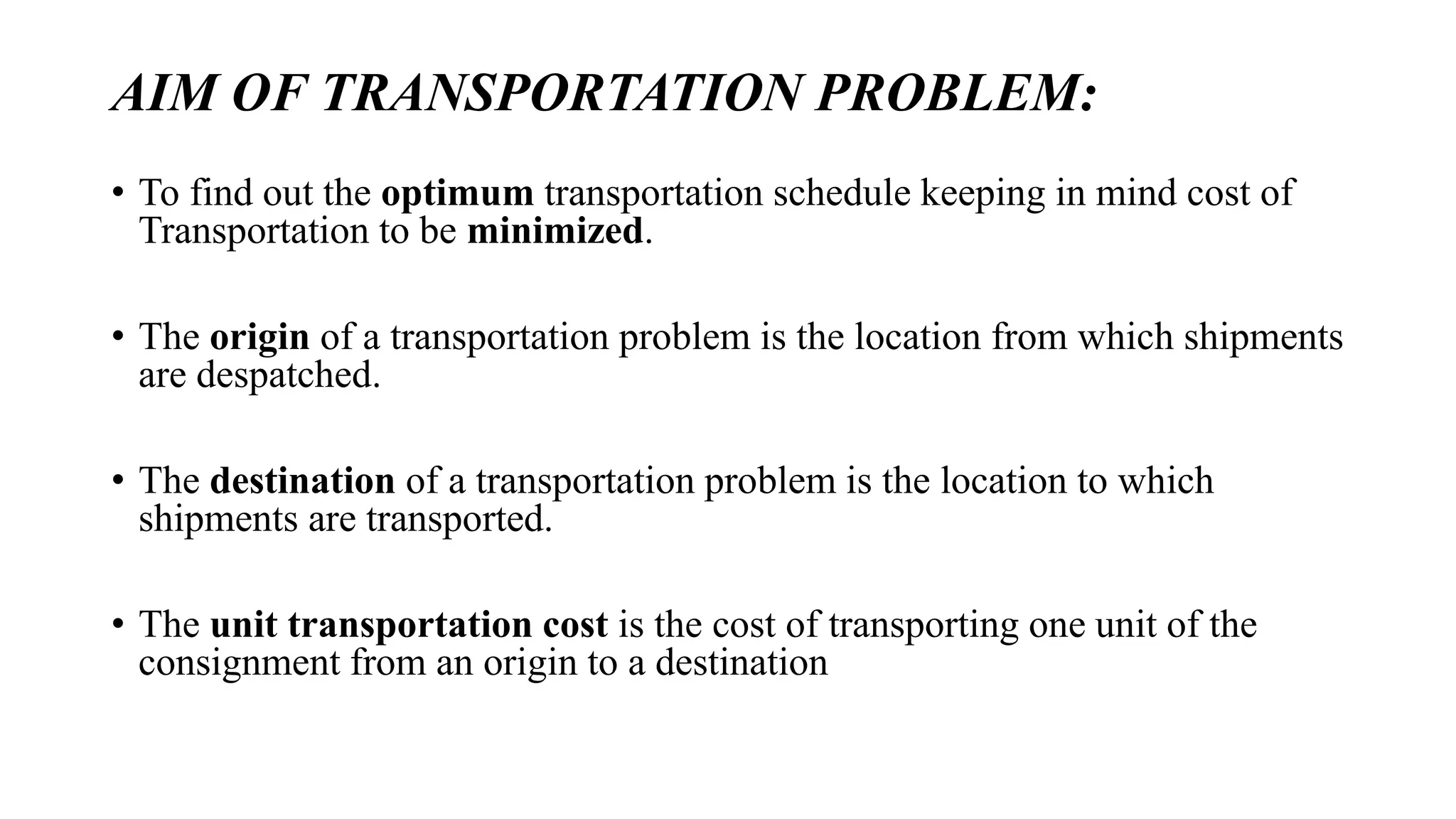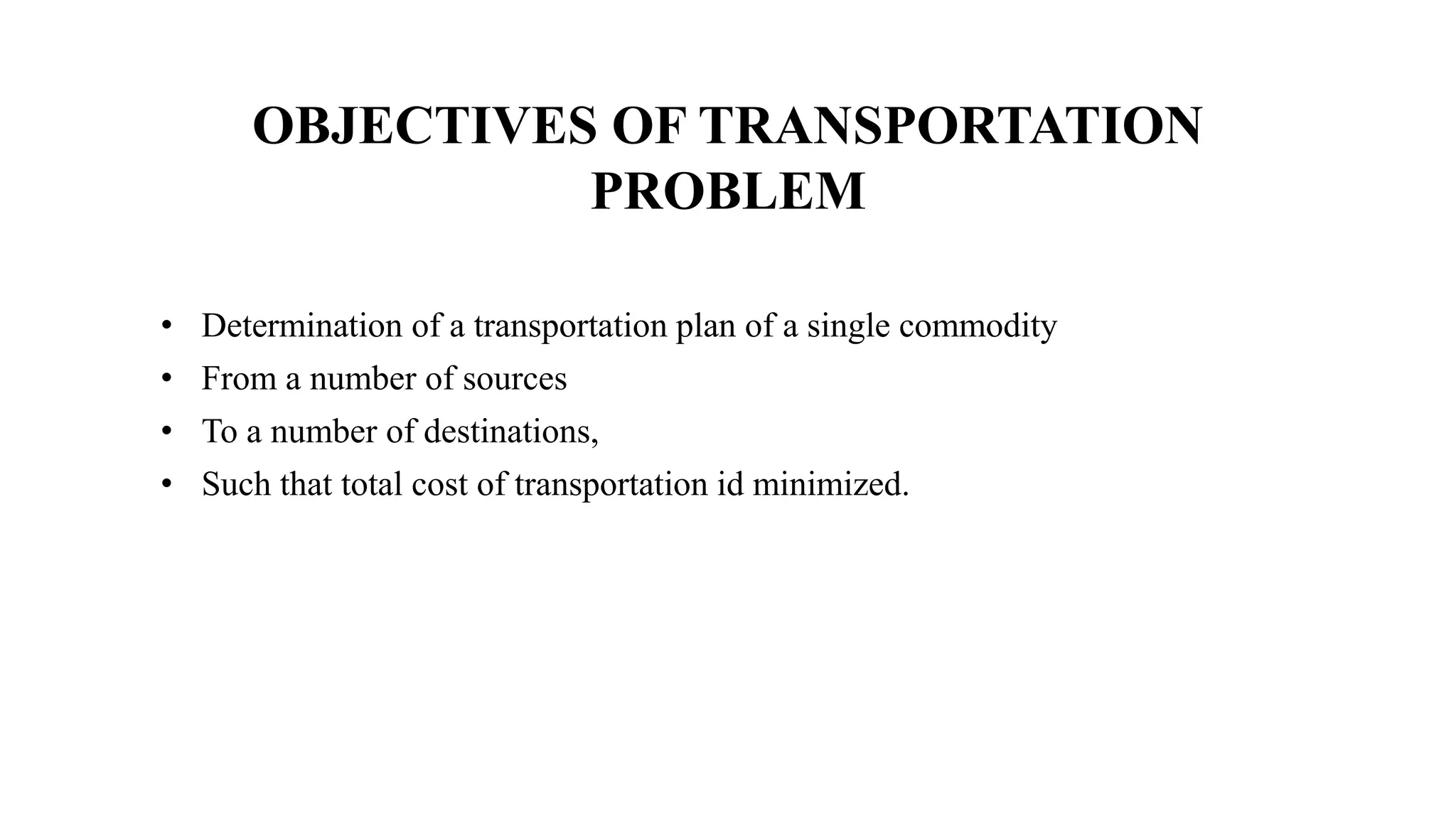The transportation problem is a linear programming challenge aimed at minimizing costs associated with distributing products from multiple sources to various destinations. It employs specialized methods like the North-West Corner Rule, Vogel's Approximation Method, and the Modified Distribution Method to achieve efficient transportation plans while considering supply and demand constraints. This problem can be classified into balanced and unbalanced types based on whether total supply meets total demand, with specific solution phases for deriving optimal transport schedules.






































